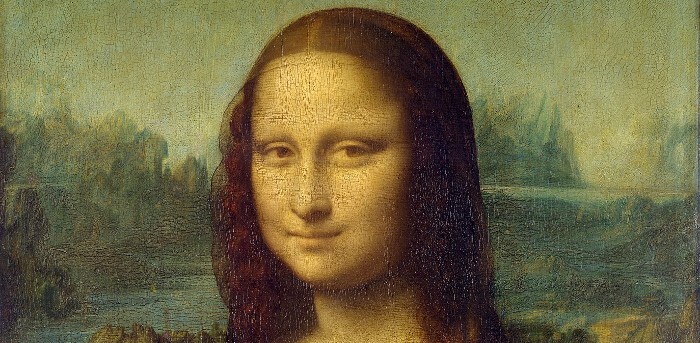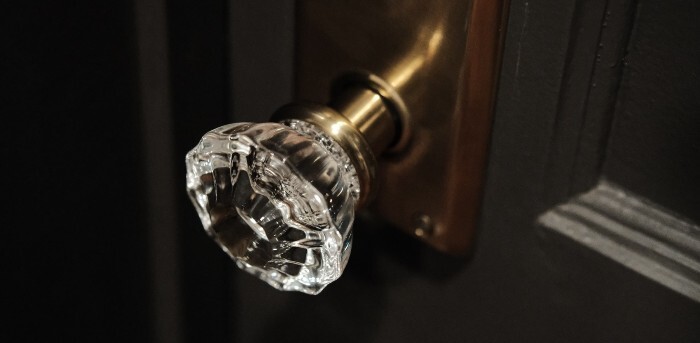How the Mona Lisa Became Famous (Via Burglary)

It’s hard to imagine a time when you could just hide in a closet at the Louvre and walk out with the Mona Lisa without anyone even noticing for an entire day. You can hardly get close enough to Mona Lisa to see the shockingly tiny thing, let alone begin to figure out how to get it off the wall. That’s largely because, a little over 100 years ago, an Italian patriot turned a little-known masterpiece into the most famous painting in the world.
Mona Lisa

In 1911, only the most insufferable art snobs even knew or cared about the Mona Lisa. In fact, after it was stolen, the Washington Post accidentally published an image of a completely different Da Vinci piece alongside the story.
Early 20th Century Museum Security

Despite the fact that art theft must have been a lot more prevalent back when you couldn’t just make your own print on RedBubble, the Louvre only had about half as many guards as it did rooms, so there was always a time no one had eyes on even the most famous works. They did have glass cases protecting some of them, including the Mona Lisa, which happened to have been built in part by a man named Vincenzo Peruggia.
Vincenzo Peruggia
Peruggia was an Italian handyman and wannabe artist living in France in the years leading up to World War I, so you can imagine how all those words in that order led to a pretty rough existence. Peruggia had a particular bone to pick with the French about the theft of Italian art, something he must have had a lot of time to ruminate over while he built the Mona Lisa’s glass case, though he was evidently unaware Da Vinci had gifted the piece to the king of France. Oops.
How He Did It

It’s believed that Peruggia hid in a Louvre closet overnight, but he claimed he just walked in early in the morning dressed like the other workers. Whatever the case, he somehow managed to lift the painting (possibly after tossing off a classic “Hey, what’s that over there?” to the half-guard assigned to the room), hid it under his smock, and walked right out. He actually got himself locked in a stairwell first, but a friendly plumber let him out.
No One Noticed
It took 28 hours for anyone to notice the painting was gone, probably due to a combination of its comparatively low status and the fact that a bunch of pieces were being taken to the roof to be photographed that day and workers just assumed the Mona Lisa was one of them. It’s unclear if Peruggia had any prior knowledge of the photo shoot or just got lucky, but given the whole “locked in a stairwell” thing, it was probably the latter.
One of Those Insufferable Art Snobs
In fact, what finally tipped off staff that something criminal had gone down was a “pushy artist” who had arrived to the museum to do some painting, which was apparently something you could just do inside the Louvre, but insisted he could only paint in the Mona Lisa‘s presence. This Belle Époque man-Karen demanded the guards go find out how long the photographers were gonna take, at which point everyone sacre bleu themselves.
Pablo Picasso

One of the first suspects was Spanish expat Pablo Picasso, which was reasonable because he’d totally bought art stolen from the Louvre before. Of course, he had nothing to do with it, but for their trouble, he did return the statues he’d bought from a different art thief who’d given up a still separate art thief who had named Picasso, so that was something.
J.P. Morgan

Another early suspect was American tycoon J.P. Morgan, though that one was really more conspiracy theory than anything else. At the time, the French public were really cranky about American millionaires buying up all the good French art, so they just kind of threw a dart at a mogul collage and said, “It was probably that guy.”
The Worldwide Manhunt

The Mona Lisa was still a valuable painting despite its relative obscurity, so its theft was always gonna be news, but at any other time in history, it might not have become a media sensation. Locally, the French media were looking for any excuse to mock the government, and international media was really just starting to become a thing, so picking up a story from France was a fun little diversion. Besides, American millionaires were being accused of stealing an Italian painting, so it was a lot of people’s business.
The World’s Most Famous Spot on the Wall

Amidst the media blitz, more people -- including Franz Kafka -- started showing up to see the empty place where the Mona Lisa used to live than had ever come to see her herself. It was actually the first time there were lines to get into the Louvre and, to many backpackers’ consternation, the last time there ever weren’t.
How Peruggia Got Caught

Meanwhile, the painting sat in a trunk in Peruggia’s apartment for two years as he tried to figure out how to get rid of it without every police force in the world taking turns arresting him. He was actually interviewed twice by police who had no idea they were mere steps from their new national treasure. He eventually contacted an art dealer in Florence, who was like, “Sure, I will totally buy the world’s most famous stolen painting,” waited until it was in their possession and authenticated, and immediately called the police.
Peruggia in Prison
Despite taking every opportunity to make a huge scene in court, Peruggia had the advantage of being sentenced by an Italian jury, who sympathized with his feelings about those French fuckers. After pleading guilty and explaining he only wanted to return the painting to its rightful home, he only served somewhere between six and eight months in prison for a $5 million theft.
Return Tour

Peruggia might not have gotten the reward he was after, but the art dealer who turned him in sure did. Their gallery got to display the Mona Lisa to a crowd of tens of thousands before it was sent on a tour around Italy and finally returned to the Louvre. Again, this was a painting that no one had ever lined up to see except for some weird still-life artist.
A Possible Accomplice
Peruggia was clearly at least partially motivated by the money he thought he would receive for returning Da Vinci’s work to Italy, and the year after Peruggia was caught, a reporter claimed a con man with connections to an art forgery operation told him Peruggia was nothing more than his fall guy. He’d orchestrated the theft, he said, because forgeries of the Mona Lisa would fetch higher prices while it was missing. No one else ever managed to corroborate any part of the story, so who knows who was making what up?
Peruggia’s Fate

As for Peruggia, he went pretty much straight from jail into World War I, when he was captured by Austria-Hungary and held as a prisoner of war for two years. He accomplished little else before dying of a heart attack about 15 years after he pulled off one of the most impressive art thefts in history, but he was played by Jack Black on Drunk History, and really, what better legacy can any of us hope for?
Top image: Louvre Museum/Wikimedia Commons